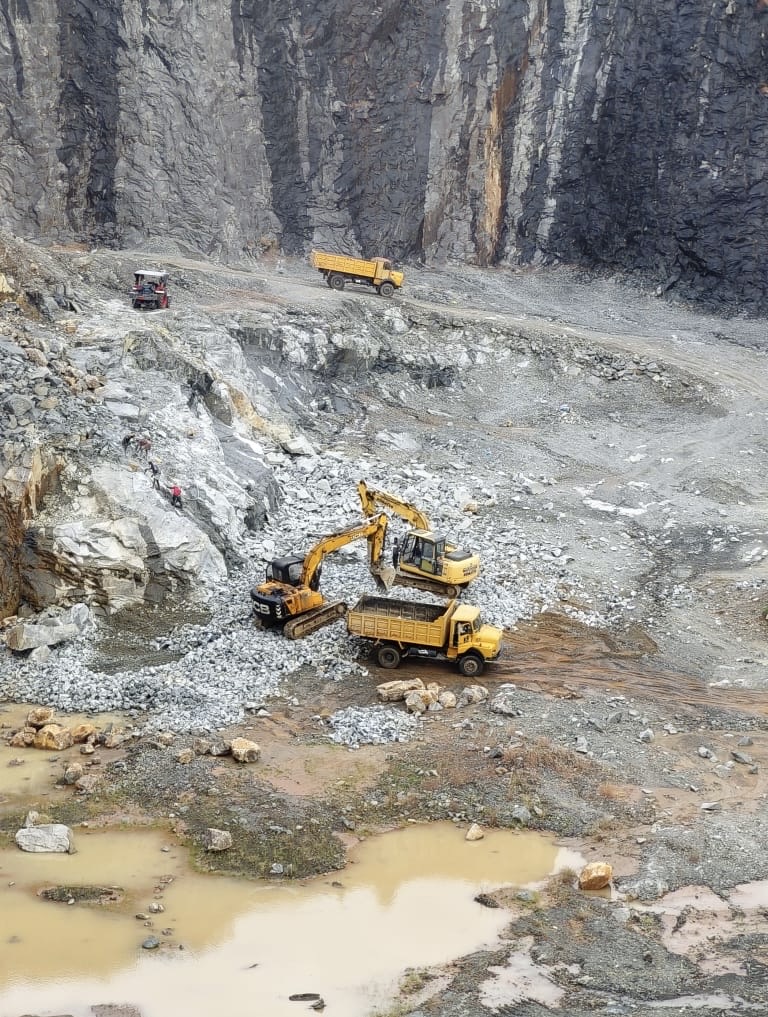How Renewable Resources Depend on Non-Renewable Resources

1. The Role of Mining in Renewable Technologies
Mining is often perceived as the cornerstone of non-renewable resource extraction, but it is equally crucial in the production of renewable energy technologies. For instance, the solar panels and wind turbines that are at the heart of the green energy revolution require a wide range of minerals and metals that must be mined.
Solar Panels
To manufacture photovoltaic (PV) solar panels, a number of minerals are required, including silicon, copper, silver, and rare earth elements. Silicon, which is derived from sand, is the most common material used in solar panel production, but it still requires significant energy to process. Meanwhile, silver, often used in the conductive layers of solar cells, is a finite resource and is mined primarily in countries like Peru and Mexico.
The need for rare earth elements such as neodymium and dysprosium—which are used in the magnets for wind turbines and in some solar panel technologies—further emphasizes the dependence of renewable energy on non-renewable resources. These rare earths are extracted mainly from mining operations in China, which controls over 90% of global production, a practice that has raised concerns about geopolitical tensions and environmental impacts.
Wind Turbines
Wind turbines, another prominent renewable energy technology, require substantial amounts of steel, copper, and rare earth metals. Copper is particularly important in the production of electrical wiring and motors, while rare earth elements are used in the magnets of wind turbine generators. Neodymium, praseodymium, and dysprosium are all used in the creation of high-strength magnets that are necessary for efficient wind power generation.
The extraction and processing of these materials involve energy-intensive mining processes that require significant environmental resources, raising concerns about the long-term sustainability of renewable energy solutions.
2. Computers and Electronics: A Green Paradox
Another area where renewable technologies are deeply connected to non-renewable resources is in the production of computers and electronics. Smart grids, which are crucial for integrating renewable energy into national power grids, rely heavily on advanced computing and communication technologies. The devices used to monitor, store, and distribute renewable energy require materials like lithium, cobalt, nickel, and graphite, all of which are extracted from the earth.
Lithium-ion Batteries
One of the key components in the renewable energy transition is the widespread adoption of electric vehicles (EVs) and battery storage systems for solar energy. These systems rely on lithium-ion batteries, which use lithium, cobalt, and nickel—resources that are largely obtained from mining operations. The demand for these minerals has surged due to the growing interest in electric vehicles and renewable energy storage solutions.
While lithium is considered a critical element for a clean energy future, its extraction is not without challenges. Lithium mining, especially in places like the Lithium Triangle in South America, has raised environmental and ethical concerns, as the extraction process uses vast amounts of water and can lead to soil contamination and loss of biodiversity. Moreover, the cobalt used in batteries often comes from mines in the Democratic Republic of Congo, where there are human rights concerns and exploitative labor practices.
3. The Fossil Fuel Dependency in Renewable Energy Production
While renewable energy sources like solar and wind may reduce dependence on fossil fuels for electricity generation, the production of renewable energy technologies still relies on fossil fuels in many ways. For example, the manufacturingand transportation of solar panels, wind turbines, and electric vehicle batteries require significant amounts of energy, much of which is still derived from fossil fuels. Furthermore, the mining of materials needed for these technologies is an energy-intensive process that typically uses fossil fuels such as coal and natural gas.
Additionally, the construction and installation of renewable energy infrastructure often involve heavy machinery and transportation, which again rely on fossil fuels. In fact, renewable energy projects—from the production of solar panels to the construction of wind farms—generate significant carbon emissions in their early stages before they begin to offset emissions over time. As a result, the full environmental impact of renewable energy technologies must take into account the carbon footprint of their material extraction, manufacturing, and construction phases.
4. The Circular Economy: Reducing Dependency on Non-Renewables
The key to making renewable energy truly sustainable lies in creating a circular economy for renewable resources and the materials used to produce them. Instead of relying on constant extraction, we need to prioritize recycling and reuse of the materials that go into renewable technologies. For example, recycling solar panels, batteries, and wind turbine bladescan reduce the need for new mining operations and reduce waste.
Additionally, research into alternative materials is ongoing to reduce the dependency on rare earth elements and other finite resources. Innovations in perovskite solar cells, for instance, aim to create more efficient solar panels without relying on scarce materials like silver.
Conclusion: The Challenge of a Sustainable Transition
While renewable energy technologies offer a pathway to a cleaner, greener future, their production and implementation are still closely tied to non-renewable resources. The mining of metals and rare earth elements, the use of fossil fuels in manufacturing and construction, and the environmental challenges associated with resource extraction all highlight the complex relationship between renewable and non-renewable resources.
To truly achieve a sustainable energy future, it is crucial to address these dependencies by improving recycling, advancing sustainable mining practices, and investing in alternative technologies. Only then can we ensure that the transition to renewable energy is not only a cleaner future for the planet but also a resource-efficient one.
